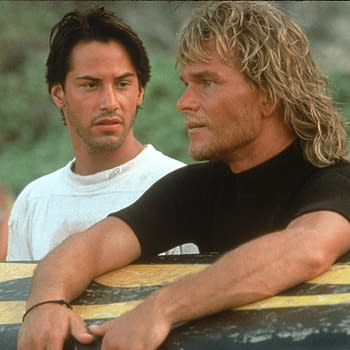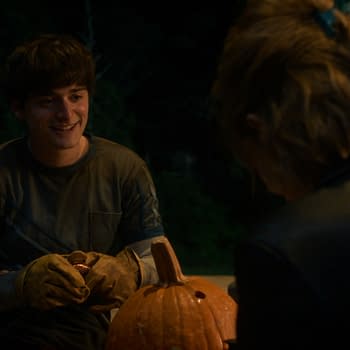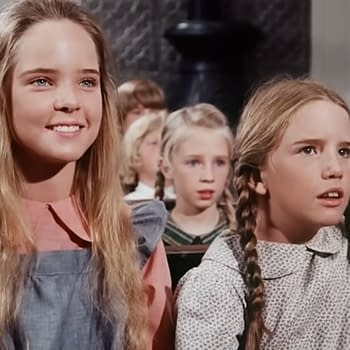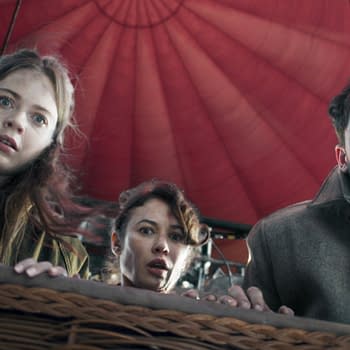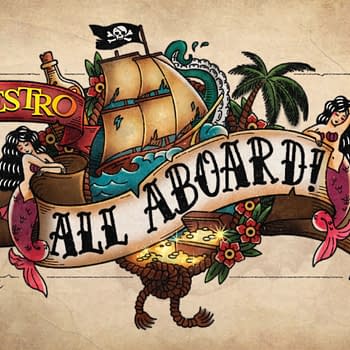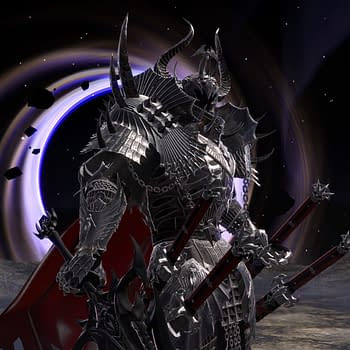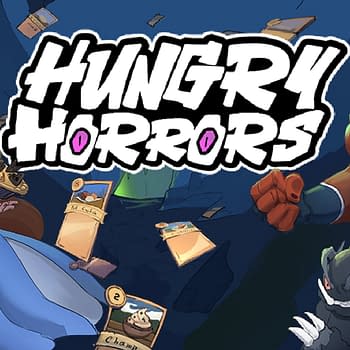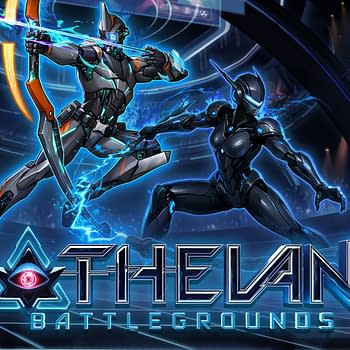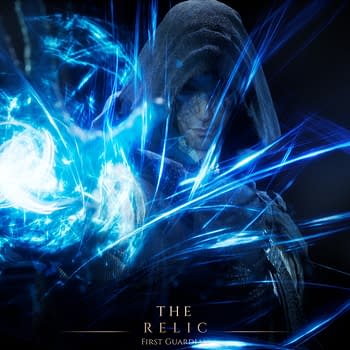Posted in: Arcade, Games, Video Games | Tagged: Alien Vs Predator, aliens, capcom, Golden Axe: The Revenge of Death Adder, Konami, Run and Gun 2, sega, Star Wars Trilogy Arcade
Five of the Most Memorable Unported Arcade Games
Back when arcades ruled the video game scene from the 80s to the 90s, it would be natural for the most popular games ported to the most popular consoles at the time, yet there were the rare few games that never saw a home release.
Growing up as a child of the 80s, the arcade was a way to challenge friends in person either directly or in turns depending on the game. Whether if it's Galaga or Marvel vs. Capcom 2, players got to a chance to compete against each other at home when arcades circulated older games out.
The memories never really went away as there are still arcade aficionados who enjoy the comforts of those same games via emulation. Reasons why the game wasn't ported vary from not enough popularity to justify development for console or the franchise licenses expire. Here are our favorites from the arcades that never made it home.
Star Wars Trilogy Arcade (1998) – Sega
Star Wars has had a presence in arcades ever since video technology could in any way or form recreate the franchise excitement from the films. From the choppy vocals, MIDI soundtrack and vector graphics of Atari's game in 1983 to Sega's 1998 graphically stunning rail shooter, saving the galaxy never felt more fulfilling.
While Lucasfilm granted Sega rights to create three arcade adaptations: Star Wars Arcade (1993), Star Wars Trilogy Arcade (1998) and Star Wars: Racer Arcade (2000). Sega released SWA for their Genesis add-on, Sega 32X to average reviews where players fly the iconic Rebel Alliance X-Wing and Y-Wing recreating the ship battles from the Original Trilogy.
The 1998 game borrowed elements from the 1993 improving graphics and additional levels in first person perspective. The first stage took you through the Battle of Yavin from A New Hope, the second stage from The Empire Strikes Back broke up into three parts: navigating snowspeeders against AT-AT walkers and probe droids on the surface of the planet of Hoth, the evacuation from the rebel base, and the stage's boss In Boba Fett. The third stage from Return of the Jedi breaks down to the landspeeder chase against Stormtroopers on Endor, the raid on the imperial outpost on the planet's surface, the battle against the second Death Star and concluding with the final boss fight with Vader.
On the vehicle battles, players would take on the role of Luke with the exception of ROTJ where Lando pilots the Millennium Falcon over Endor. As Luke, you also use the flight stick to navigate through the boss flights from deflecting Boba Fett's blaster shots and parrying Vader's lightsaber strikes to reflecting shots back to Fett and launching a counter attack to Vader. The non-vehicle rail missions puts you into the role of Han Solo.
It's a shame Sega never ported the game to the Dreamcast or its contemporary competing consoles. There's few things as satisfying as using a flight stick to control the game rather than a regular controller.
Alien vs. Predator (1994) – Capcom
Capcom revolutionized fighting games with Street Fighter 2 and they would do the same with the side-scrolling beat 'em ups with Final Fight. The company would take the formula that worked in FF and apply it to Alien vs. Predator.
The game based on the film of the same name, which the studio shelved until 10 years later with a completely different story. The difference between FF and AvP is the later features a fire button which fires the character's gun, but can overheat from excessive use.
When you imagine what we miss out on as a four-player beat 'em up with four character choices: cyborgs Major Dutch Schaefer and Lieutenant Linn Kurosawa, and two predators, a warrior and hunter. Schaefer played similar to Mike Haggar from the FF series where you thrive on power through your blows and wrestling moves, which when applied to an enemy can cause chip damage to nearby enemies. He also had a minigun, which not even worth the effort considering how much more valuable he is in close quarters combat.
Kurosawa thrived on speed and comboed with her katana. She had the best rate of fire with the machine pistol she wields. Utilizing her speed is key and the advantage is the quicker recovery time she delivering blows to her opponents.
The two predator characters are more balance characters using their staves to deliver the brunt of their punishment. They usually can take out minions in one full combo. They also have the best gun weapons in the form of their shoulder cannon which creates a fiery stun to opponents, which is particularly helpful when your group becomes overwhelmed. The only difference between the two is one is slightly faster and the other is slightly stronger.
Before the film's suspension, Capcom completed their game based on the draft of the script they had at the time. Strangely enough, none of the predators in the films ever showed the kind of cooperation the game had. The plot follows the familiar and tired cliché of humanity trying to weaponize creatures they don't fully understand with disastrous results. You might have seen it recently, but it involved dinosaurs.
A port of the game scheduled for Sega 32X wasn't released.
Run and Gun 2 (1996) – Konami
Konami might be better known for their side scrollers like Contra and Castlevania, or their espionage franchise, Metal Gear Solid, but they also produced sports games.
The first Run and Gun was a tournament-style basketball game came to arcades in 1993. Since there was no NBA licensing at the time, players selected cities instead. Similar to other basketball contemporaries in NBA Jam, it was a quarter muncher typically costing a dollar to play a full game. So in order to finish the tournament short of emulation, you need $4 minimum to complete the tournament, assuming a credit was a quarter.
The controls are simplistic with buttons shoot/block, steal/pass, and player start. Players control either the ball carrier or main defender. To pass/change defender, you point to the appropriate direction of the player and press the appropriate button. The general concepts like regular shots, dunks, layups, and three pointers. While many basketball games at the time either opted for a side or isometric view, the RAG series opted for a third person view.
Run and Gun ported to the Super Nintendo in 1995 with the NBA license and rebranded NBA Give 'n Go. The port received an underwhelming response, not to mention certain players missing like Shaquille O'Neal and Charles Barkley.
Konami released the sequel in Run and Gun 2 in 1996 providing smoother gameplay and animations, improved graphics and new mechanics like alley-oops, spins and blockouts. Despite the more positive reception, the company again opted against the NBA license for arcade release.
The AI does get incrementally more difficult if the player's team starts to pull away. Konami missed an opportunity to put a quality game on consoles, at least contemporary ones capable of handling the game.
Aliens (1990) – Konami
Aliens, based on the James Cameron sequel of the same name, was a rail and side-scrolling shooter. If anyone knows about the genre, it would be the same company that developed the Contra franchise.
Player 1 controls Ellen Ripley (Sigourney Weaver in the film), the protagonist of the franchise and player 2 controls Corporal Dwayne Hicks (Michael Beihn in the film). Like its spiritual predecessor in Contra, players start with auto-firing rifle before power-ups can help decimate aliens and facehuggers.
While Alien vs. Predator was a more entertaining output for the franchise, Aliens had enough replayability to standalone as an entertaining film-to-game adaptation in a vast ocean of lackluster titles.
Golden Axe: The Revenge of Death Adder (1992) – Sega
As a fan of the Golden Axe series, Sega produce one of the most entertaining hack and slash fantasy franchises in gaming. While the original featured a barbarian, Valkyrie and dwarf, this version players can pick from a giant, barbarian, Kentauride (centaur), and elf.
The game follows the familiar formula from the previous games, attacking orcs, monsters and demons while charting various different paths to finish the game. Surprisingly, it was the only GA game never ported. It was also a rare opportunity outside of Atari's Gauntlet franchise and Capcom's Dungeons and Dragons franchise for players to interact with one another. You can almost say these games were precursors to the modern MMORPG that took the action out of simple sprites and text to direct action.
Then again, Sega's neglect of porting their Sega System 32 games leaves a significant void from true collectors…short of those paying thousands of dollars for the arcade cabinet itself.
Do you have a favorite unported game you want to share? Sound off below in the comments.







